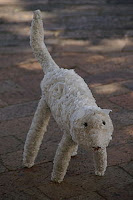Mind Mapping
(Informations taken from Litemind.com and lecture notes)

Example of mind map
What is mind map actually?
- A graphical way to represent ideas and concepts. It is a visual thinking tool that helps structuring information, helping you to better analyze, comprehend, synthesize, recall and generate new ideas.
- An activity that is both analytical and artistic, it engages your brain in a much richer way, helping in all its cognitive functions.
- Mind-maps were devised in the 1960s by Tony Buzan, who has written a number of splendid books on the subject.
What are the benefits of of it?
- Mind mapping avoids dull, linear thinking, jogging your creativity and making note taking fun again.
What can we use mind maps for?
- Note taking
- Brainstorming
- Problem solving
- Studying and memorization
- Planning
- Researching information from multiple sources
- Presenting information
- Gaining insight on complex subjects
Jogging your creativite
How to draw a mind map?
- Start in the middle of a blank page, writing or drawing the idea you intend to develop.
- Develop the related subtopics around this central topic, connecting each of them to the center with a line.
- Repeat the same process for the subtopics, generating lower-level subtopics as you see fit, connecting each of those to the corresponding subtopic.
Some additional tips:
- Use colors, drawings and also symbols. It will be look more interesting and fun.
- Keep the topics labels as short as possible; easy to read, to understand and to remember.
- Vary the text size, color and alignment.
In my opinion, doing a mind map is fun and also the creative way to represents something in a simple way. It is very useful especially for a student to remember what they have studied or any other things. By the way, below is the example of a mind map done by me. It is all about myself. I prefer to do the mind map by drawing rather than do it digitally by using software.

Logical mind map
Directly connected to stereotypes. The logical mind map comprises of solely stereotype words., which means that every word or image that is put within the mind map is directly related to the central subject through its links.
Logical Mind Maps & Stereotypes
Before beginning a Logical mind map we have to understand what a Stereotype is; below is the definition of the word.
Definitions of Stereotype
ster·e·o·type
A conventional, formulaic, and oversimplified conception, opinion, or image.
One that is regarded as embodying or conforming to a set image or type.
ster·e·o·typed, ster·e·o·typ·ing, ster·e·o·types
To make a stereotype of.
To characterize by a stereotype: “Elderly Americans are the neglected sector of the fashion industry, stereotyped by blue hair and polyester pantsuits” (American Demographics).
To give a fixed, unvarying form to.
The Rules Of Logical Mindmapping
1. Always have your SUBJECT in the center of the page.
2. Try to make the subject more dominant than the rest of the words and images in the mind map.
3. Decide on the main categories of the subject before executing on mind map.
4. Try to have the different categories in different colors, to make it easier to identify.
5. Try to use drawings or images to make your mind map more interesting and personal.
6. The ideal mind map should be shaped like the roots of a tree, branching out from a center.
7. It is OK to repeat words or even interlink certain words.
8. Try to make your mind map neat and easily legible. REMEMBER one of the aims of the mind map is to create interest and to be able to access information easily.
Associated Mind Map
Using an associated mind map we are able to generate random words and also show the links between words that seemingly have no connection.
Associated Mind Maps & Random Word
Using an associated mind map we are able to be able to generate random words and also show the links between words that seemingly have no connection. Below is the definition for the word Random.
Definition of Random
ran·dom
Having no specific pattern, purpose, or objective: random movements.
The Rules Of Associated Mindmapping
1. Always keep your mind open and relaxed.
2. Start off with the Subject (Word or Image) dominating the center of the page.
3. Immediately branch off in to main categories as you would in a Logical mind map.
4. Pick a link and start expanding. Write the first thing that comes to mind in relationship to the word. Eg. Malaysia – State – United States – Statue of Liberty – Woman – Beautiful
5. The links in the Associated mind map do not have to link directly with the central subject, but instead is only linked to the words surrounding it.
6. Try to put down the first thing that comes to your mind. An Associated mind map is supposed to be fast.
7. Sometimes we tend to get excited and go on and on. But REMEMBER the ideal mind map should be shaped like the roots of a tree, branching out from a center; the same rule applies for the Associated mind map.
8. Have fun. The best Associated mind maps are created when in a relaxed frame of mind.





































